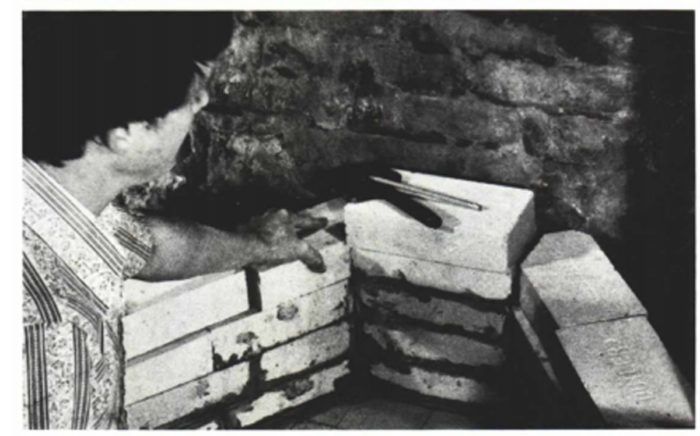Rumfordizing Brick by Brick
How to convert an energy-wasting fireplace to an efficient heater.

Synopsis: Rumford fireplaces are designed to project more heat into a room than a standard design. This article describes the process of converting a conventional fireplace by reshaping the firebox. A sidebar offers an account of the man who originated the design.
Most modern fireplaces don’t do a very good job. Many smoke so badly that they can’t be used, and almost none are efficient heaters. In fact, many of them draw more heat out of the house than they return, sucking in warm room air and sending it up the chimney. But it’s possible to convert one of these mere ornaments into a functioning and efficient fireplace. An American Tory named Benjamin Thompson, later called Count Rumford, demonstrated the relevant principles two centuries ago.
Rumford proved that the key to an efficient fireplace is a properly proportioned firebox, with important dimensions based on the width of the opening. Both the firebox’s depth (distance from opening to fireback) and the width of the fireback should each equal one-third the opening’s width. This makes for a shallow firebox with covings angled at a sharp 45° to reflect the fire’s radiant heat into the room. The fireback, which must be vertical to a height equal to one-third the opening’s width, begins to slope forward from that point to a small throat above the lintel. The sloping back reflects more heat, and the small throat results in a more forceful movement of air up the chimney. It also leaves room for the smokeshelf, a necessary feature where descending cool air and ascending hot air circulate to set up a strong draft.
Rumford’s workmen renovated so many smoking fuelwasters in England that a new word entered the language. His wealthy customers didn’t just have their fireplaces improved, they had them “rumfordized.” Once you know the principles, you can rumfordize your own fireplace. Fireboxes are not structurally connected to the masonry of the chimney, so you can tear out an unsatisfactory one and replace it easily.
Materials
For this job you’ll need clean sand and water, masonry cement for the rubble fill behind the new firebox, firebricks and fireclay to join them. Experience provides the best way to judge just how much of each you will need for a specific project. For a fireplace 24 in. wide and 30 in. tall, I used 84 firebricks ( 2 1/4 in. by 4 1/2 in. by 9 in. each), along with 1/4 yard of sand and 2 sacks of cement. You can buy clean sand by the fraction of a yard at most lumberyards.
There are two kinds of fireclay, premixed and dry. The premixed costs twenty times as much as the dry variety, and can’t be scraped or chipped from the faces of firebricks after it dries. Dry fireclay (available at ceramic supply houses) is sold in 50-lb. sacks, but one sack costs less than a single gallon of premixed.
As for the firebricks, try to buy what you need from the same lot. They will be fired to the same hardness, and there will be fewer small variations in their dimensions. You can find them at masonry supply houses and many lumberyards.
For more photos, drawings, and details, click the View PDF button below:


























